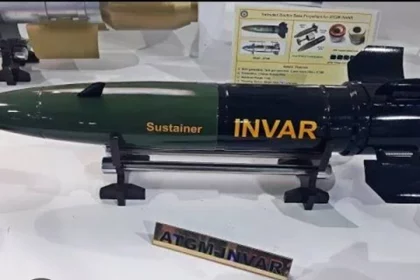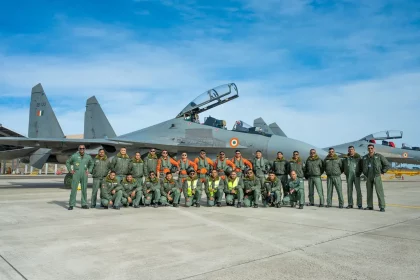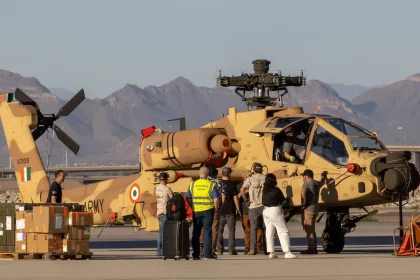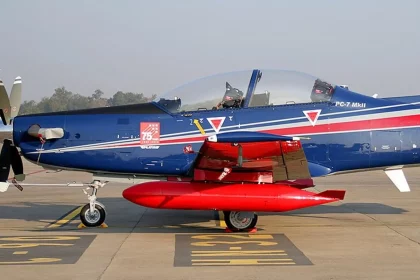MoD Signs ₹2,095 Crore Contract With BDL for INVAR Anti-Tank Missiles
Contract to Equip T-90 Tanks With Laser-Guided Missiles, Boosting Armoured Firepower.
Suryakirans Arrive for Dubai Air Show 2025
IAF’s Elite Formation Team to Showcase Precision Flying at One of the World’s Biggest Aviation Events.
IAF Contingent Arrives in France for Exercise Garuda-25 to Strengthen Air Power Synergy
Bilateral air combat drill aims to enhance interoperability between Su-30MKIs and French Rafales.
India and Spain Strengthen Ties, Review Bilateral Cooperation at 8th Foreign Office Consultations
Both nations review progress in defence, technology, tourism, and strategic cooperation during high-level talks in New Delhi.
Turkey Blocks Overflight of An-124 Carrying Indian Army’s Apache Helicopters; Aircraft Returns to U.S. After Week-Long Impasse
Turkey’s Airspace Denial Stalls Delivery of Indian Army’s New Apache Fleet.
Indian Air Force PC-7 Mk II Trainer Aircraft Crashes Near Tambaram; Pilot Safely Ejects
A Court of Inquiry has been ordered to determine the cause of the accident.






